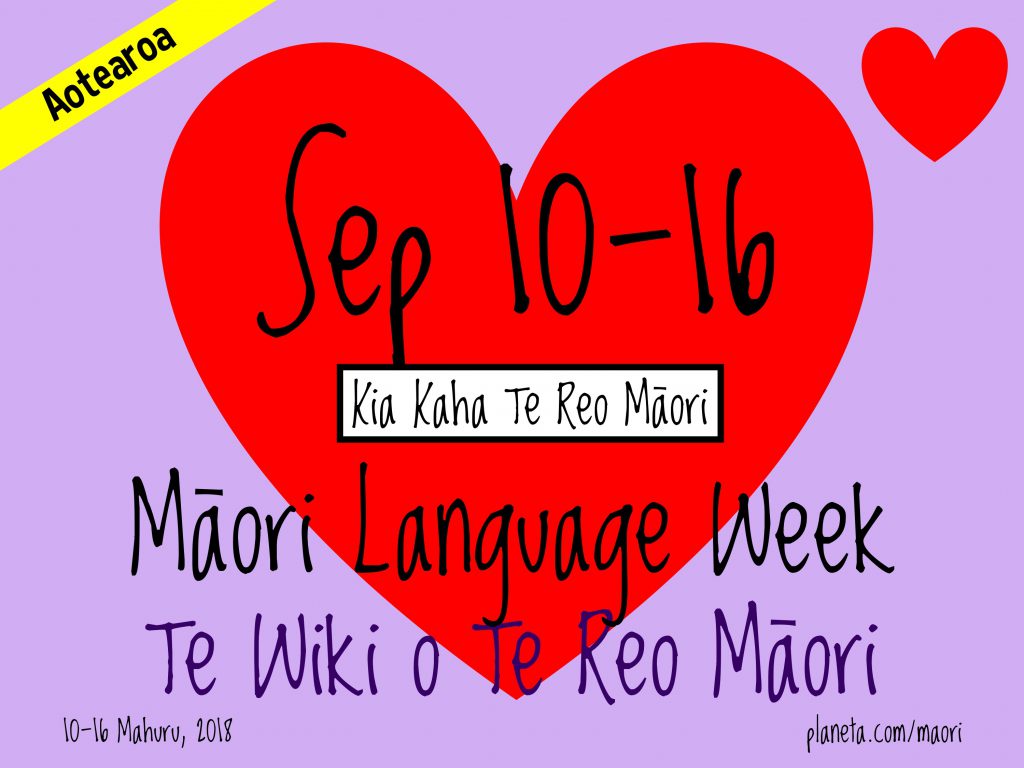The Future of the Māori Language – a travel blog
Kia Kaha Te Reo Māori ‘Learn the Māori language’
Kia Kaha Te Reo Māori is the theme of New Zealand’s official Māori language week for 2018. Since 1975 the government has sponsored such weeks as part of the effort to keep Māori alive.
How is the effort going?
Māori language history
In the 19th century Māori was the language of communication within the Māori community and institutions such as the church and the state. In 1867 Māori representation was instituted in the House in the form of four regional Māori seats. These MPs were provided interpreters because they couldn’t speak English. Still today MPs exercise their right to speak Māori in the House, although now more for politico-cultural reasons than necessity.
Over the twentieth century there was a clear shift away from the use of Māori and toward English. In 1913 90% of the Māori population could speak the language. By the late 1950s only about 26% could.
Revitalization efforts got into gear, but it wasn’t until 1987 that the Māori Language Act was passed. In its preamble this Act referred to the Treaty of Waitangi signed in 1840 that stated the Crown’s obligation to guarantee the Māori possession of their taonga ‘treasured possessions, property.’

In 1987 the case was made to recognize the Māori language as a taonga.
Māori language present
When a language becomes a subject of instruction rather than the medium of instruction it is slated for language death. This truism is exemplified all over the world.
It goes without saying that Māori was the language of instruction in the traditional education system before the arrival of the English. Māori as a language of instruction disappeared from New Zealand schools from the middle of the 19th century until the 1980s. (Māori as a subject has been available a lot longer.)
In 1982 preschool centers were established – called Te Kōhanga Reo (TKO) ‘the nest language’ – in which children were immersed from infancy in both the language and the customs. By 1993 there were 809 centers, although the number fell to 513 in 2004. The number of children enrolled also peaked in 1993.
If TKR is successful in its goal of producing bilingual 5-year-olds, then a significant proportion of the Māori population is regaining is language.
By 1985 the need to extend education into the primary curriculum was felt, and so Kura Kaupapa Māori ‘school policy’ was developed for Māori-medium education. In 2004 there were 62 such schools.
Now come the problems. Are there enough teachers with sophisticated enough language skills coupled to a subject to teach beyond the primary levels? Are good materials available in secondary-school subjects? In science-oriented subjects, should one use English because it is the language of further study and international discourse?
At the tertiary level, for instance, at the University of Waikato, Hamilton, it is possible to complete an entire BA in Māori-medium Māori Studies, go on to receive an MA and even a PhD without ever having attended a lecture or written an assignment in English. Graduates go on to important roles in Māori broadcasting, policy and academic work.
Since 1983 the use of Māori on television has steadily grown. Since 2004 one station has been offering 8 hours daily of Māori broadcasts.Check out any video from the homepage of Whakaata Māori.
Māori Language and the Modern World
Māori is being pressed into service in domains where it has not been used before or has not been used since the 19th century. Thus for the language to survive it has to be able to express what people, especially the younger generations, want to talk about.
So language planning commissions have had to come up with words in new domains:
courtroom: ‘defendant’ te tangata e whakapaetia ana = ‘the person who is being accused’
sports: ‘center back’ tuarā pū < pokapū ‘center’
technology: ‘computer’ rorohiko < roro ‘brain’ + hiko ‘lightning’ hence ‘electricity’
Now how about the word ‘technology’ itself? Hangarau is the usual modern word, but in some varieties of Māori it means ‘to jest with, befool.’ Oops!
It’s mind-boggling (to me) to imagine the best way (whatever that means) to insure that Māori language and culture survive.
Only one thing is certain: The key to success is intergenerational transmission, whether the youngsters brought up through Māori-medium instruction will bring up their own children in the traditional language.
See also: All Oceania Travel Blogs
The information in this blog comes from Chapter 7 “The sociolinguistic situation of Māori” in Māori: A Linguistic Introduction by Ray Harlow (2012).
Categorised in: Adventure, Language, Thoughts
This post was written by Julie Tetel Andresen
You may also like these stories:
- google+
- comment



